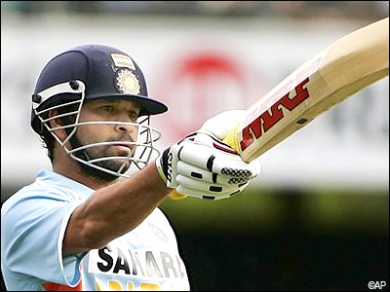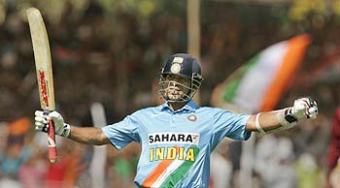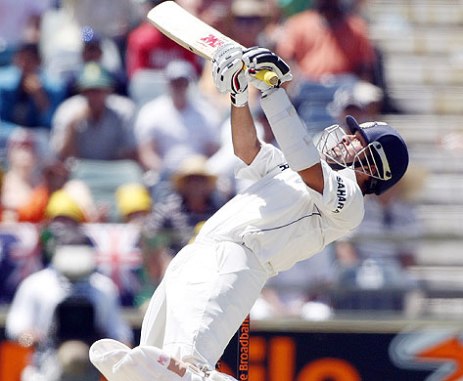This article first appeared in the DNA Digital on 18 November 2013
Last Saturday, November 16, on the day that Sachin Tendulkar retired from international cricket, the Government of India announced that he (along with Professor CNR Rao) would receive the Bharat Ratna, the highest civilian honour bestowed on an Indian citizen.
Before 16 December 2012, the award was for “exceptional service towards advancement of Art, Literature and Science, and in recognition of public service of the highest order”. On that day, it was changed so that it could be awarded “in recognition of exceptional service/performance of the highest order in any field of human endeavour”.
It was no longer restricted to exceptional individuals in art, literature, science and public service. The field was broadened to include “any field of human endeavour”. It was also ‘watered down’ to include performance as well as service. Cynics argued then, with some justification, that that the policy was altered to accommodate (arguably) India’s greatest cricketer, Sachin Tendulkar. Under the previous statement of the policy, he could not be awarded the Bharat Ratna.
In my view this alteration was partially right. There is no reason why the award could not be for “exceptional service towards advancement of Art, Literature, Sport and Science, and in recognition of public service of the highest order”. I did not like the addition of ‘performance’ to the criterion. Aakar Patel — and many others — did not agree with the rewording. Patel wrote in the Live Mint on 27th January 2012, that the award is poorer for the re-wording: “Deploying the forward slash communicates something pedestrian, not heroic.”
The debate on the rewording of the policy has been reignited, as expected, after the announcement that Tendulkar would receive the Bharat Ratna. The timing of the announcement by the Government was cheekily uncanny. Just hours earlier, Tendulkar had made a heartrending speech at the Wankhede stadium on the conclusion of his last and 200th Test match. Perhaps for the first time in his playing career, this intensely private man allowed fans into a space that he and his family had guarded extremely ferociously for over 24 years. Through the medium of TV, radio and the Internet, he entered our homes and talked about his views and thoughts and shared a few anecdotes. He inspired, touched and provoked many that saw or heard what was arguably the most beautiful retirement speech. Across India and in many other countries, grown men and women wept as we heard Tendulkar speak from his heart, of the many people and organisations he owed a depth of gratitude to. Many more wept as we watched him walk up to the pitch, bend down, touch it and then touch his heart. He had paid his last respects to the arena that he gave so much to, gained so much from. We cried as he shed a tear. On social media, many adults wrote to say that with his retirement, their childhood had ended, for much of this childhood was seen through Tendulkar’s exploits on the cricket field.
On the day Tendulkar made that speech, even the most hostile cynic did not have a voice that was loud enough to protest the decision to award him the Bharat Ratna.
By the next morning, though, the naysayers began their rhetoric: ‘Kapil Dev deserved it more’, ‘Dhyan Chand should have received it too’; ‘Vishwanathan Anand should have got it too’, ‘Why give it to a professional sportsman, especially one that has earned so much money from the game’, ‘Public servants like E. Sreedharan deserve it more’. ‘M. S. Swaminathan should have got it first’, they said.
And then, Patel’s article started making the rounds again.
Patel says that the new wording waters down the stringency and rigour of the Bharat Ratna award. He argues, “The critical words “towards advancement of” have been dropped. Salman Khan performs exceptionally in his field. Does that qualify him to be Bharat Ratna? According to the new rules, it does.”
And Patel is right.
But does that mean that Tendulkar should not receive the award even if we retain the original “towards the advancement of” clause? No. There has been no player who has had the combination of “elegance, balance, poise, grace, technique, focus, determination, power, dominance, imperiousness, confidence, occasional arrogance, consistency, longevity, awareness and performance at the highest level in every theater he has visited and played in.” There is no doubt in my mind that Tendulkar has served the Indian team in a manner whereby he has worked towards the advancement of the game at the highest order.
Patel disagrees. He writes: “In any case, the Bharat Ratna isn’t a glorified man of the series award. When we give someone the Bharat Ratna, we honour ourselves. We hold up the person as an ideal of true greatness. As a model Indian, Tendulkar may not be the person to hold up in front of your children. He resembles a middle-class opportunist who will take advantage where he can find it.”
I’ve often felt upon reading Patel that he lives in a different India from the one I live in. Patel does cite three well-worn cases in his substantiation of the opportunism he sees in Tendulkar: the Ferrari tax-exemption case, the addition of a gym to his house and the reporting of a car accident in 1999.
Patel’s presentation of the Ferrari tax-exemption case ignores the fact that Tendulkar is well within his rights to seek a tax exemption on his Ferrari. Moreover, once he received the gift (with or without the exemption), the car is his. He can do with it as he pleases unless there is a clause in the gifting that prohibits a future sale.
As a tax payer and a citizen of the land, he has a right to seek permission to build a gym in his house, even after his plans have been already submitted. It is up to the government of the day to receive the case, examine it and provide such permission if it thinks that that is the right thing to do. Perhaps Tendulkar did employ a lobby group to influence the government’s ruling. Such tactics are perfectly legitimate in any functioning and vibrant civil polity.
Tendulkar’s sensitivity over the car accident in 1999 is also perfectly understandable, especially given the loud, sensationalist, high-pitched and TRP-hungry media, in which Patel plays a significant part.
In a 24-year-long sporting career, Tendulkar has played with almost no blemish against his name. He has always been a servant and a student of the game. He hasn’t been fined for either dissent or abuse even once in his immensely long playing career. His longevity and contributions to the game are unparalleled. He has been, at times, compared to the great Don Bradman; probably the greatest cricketer ever. Even if we ignore that as unnecessary hyperbole, Tendulkar has been mentioned in the same breath as Bradman, Gary Sobers, Vivian Richards and Shane Warne — some of the greatest players to have played the game. He himself has always talked about being a mere custodian of the game and has always talked about the game being much bigger than him. Unlike Viv Richards or Shane Warne or Gary Sobers, who had their occasional transgressions and peccadilloes, Tendulkar has played longer and emerged with an untarnished reputation. His career has been about integrity, pride and absolute fidelity to the fundamental tenets of the game.
If Tendulkar cannot be the person to hold up in front of children as a model citizen, I am not sure we have any in India from any walk of life: sport, art, science, politics.
In a country that is utterly bereft of role models and heroes, Tendulkar has crafted a career without a single blotch and stood as a beacon of hope and a giver of pleasure.
The award to Tendulkar has also rekindled the sport versus art debate.
Like art, sport also seeks permanence. Most sportspeople and artists are engaged in the pursuit of excellence; in something that is more than the ordinary and banal. Although some sportspeople, and perhaps artists, are motivated by the bright lights, possible financial rewards, popularity and glamour — especially at the more popular end of their endeavour — most of them, at least in their formative years, are fuelled by a burning personal desire to drive themselves towards excelling in the domain in which they are rewarded with exceptional talent. And in that sense, they are self-focused because they seek to explore the unknown — either within themselves or as part of a larger creative endeavour.
Ed Smith, in a lovely article, in which he cites the magical beauty of Sachin Tendulkar’s wristy flick to midwicket, tries to answer if sports is indeed an art. He concludes that sport is more than a mere craft. Sport can be experienced at many different levels. Just like the arts.
Yes, sport may not enable us to find cure for diabetes. Unlike literature, sport may not enable us to understand the impact of a series of Russian famines. Unlike a painting, sport may not enable us to transcend the ordinary and peek into the realm that we cannot understand. Unlike a musical composition, sport may not provide us with the ability to see how frequencies may be interwoven together in complex arrangements. But sport, like art, science and literature is enduring. Exemplary sportsmen make contributions on a different canvas and seek the same permanence that artists seek. We live in a world where excellence demands sharp focus. As a result there is less of a chance of finding a Greek javelin thrower, with javelin in one hand and a paint brush in the other. Sport uplifts the soul as much as art can. Just talk to people who like to watch the Tour de France or long distance running or endurance sports like the triathlon. The narrative there is about straining, stretching and extending the limits of human endeavour so that we may understand more about ourselves, our fears, and the limits of our abilities.
Let us return to Patel and this simplistic argument he offers: “Kumar Gandharva took apart the gharana system, transformed the culture of Hindustani music and was also given the Padma Vibhushan. Tendulkar hit cricket balls. Many cricket balls, and very far. But Bharat Ratna?”
Allow me to alter the sentence: “Tendulkar lit the hearts of a million people through making many runs continuously in the most trying circumstances. A whole generation of Indian cricketers and Indian sportspeople wanted to play with pride, poise, productivity and promise like Tendulkar, who was a beacon of integrity and hope when India suffered agonizingly through the match-fixing crisis that paralyzed the sport in the late 1990s. Kumar Gandharva just sang notes. Many notes, and beautifully, But Bharat Ratna?”
For the record, I adore Kumar Gandharva’s music and his contributions. I developed the above parallel argument just to demonstrate how facile Patel’s argument is.
There can be no doubting Tendulkar’s contributions. The impact of his work is harder to measure, but there are statements of impact that can be made. Most kids would say that they want to bat like Tendulkar. Everywhere I have watched the game, he has been a draw card. People come to watch him play. He has been cheered on most international arenas he has played in. Audiences at the Melbourne Cricket Ground, the Lords’ and Antigua anticipate his arrival at the crease and cheer him as much as the crowds at the Wankhede, the Eden Gardens or Chepauk do. Just as many aspiring musicians wanted to sing like Bhimsen Joshi or M. S. Subbulakshmi, almost every cricketer of the next generation wanted to play the game like Tendulkar — not only in India, but around the world. Yes, Tendulkar never found a cure for AIDS nor did he advocate world peace, but neither did Bismillah Khan.
There is no doubt that Tendulkar is a popular choice. But he is, in my view, a clear example of how not everything that is popular is necessarily of lesser value. His contributions transcend the many divides and boundaries we have in our complex and layered society: rich/poor, urban/rural, haves/havenots, high-caste/low-caste, popular/esoteric, aristocrats/plebiscites. And his contributions to his field have an unmatched endurance.
In the past, the Bharat Ratna award has been handed out to recipients as though they were recognition for favours (not contributions) rendered. For example, 23 of our 41 Bharat Ratna awardees are politicians. It is easy to see why the prestige and uniqueness of the award itself has been sullied.
By giving Sachin Tendulkar the Bharat Ratna, my view is that the award has, once again, gained credibility.
— Mohan (@mohank)
















